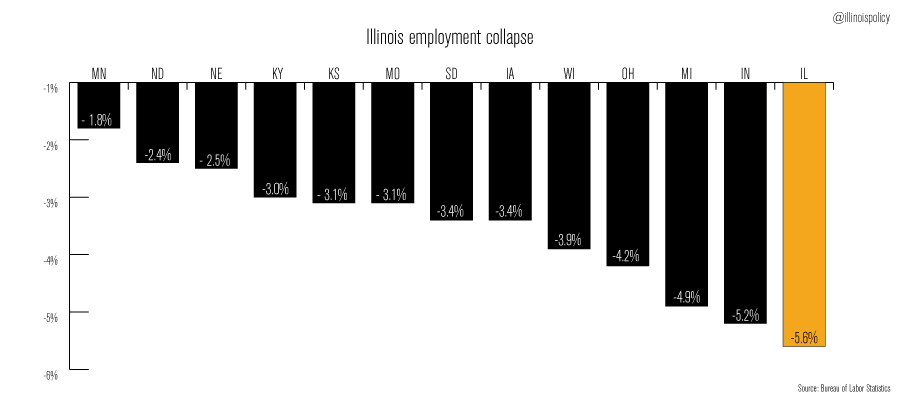What’s behind Illinois’ employment collapse?
A smaller and smaller percentage of adults are working to support the entire state population. Why does this matter? Because a booming economy provides the benefits of opportunity and upward mobility. But not only that. Growing the number of taxpayers is essential for funding core government services and pension bills. The only other tools legislators...
A smaller and smaller percentage of adults are working to support the entire state population. Why does this matter?
Because a booming economy provides the benefits of opportunity and upward mobility. But not only that. Growing the number of taxpayers is essential for funding core government services and pension bills. The only other tools legislators have are tax hikes, which have done more to chase away taxpayers than to fund the government.
The percentage of the working-age population that is employed fell by 5.6 percentage points, from 65 percent in January 2008 to 59.4 percent in December 2013. This percentage, called the employment ratio, has been described by economist Paul Ashworth as the “best measure of labor market conditions.”
The Great Recession hit the jobs market in January 2008. Since then, Illinois has seen a greater decline in its employment ratio than any other state in the Midwest.
When working-age Illinoisans leave the ranks of the employed, they fall into two categories. The first is the pool of the unemployed. When workers are discouraged enough to stop looking for work, they leave the labor force altogether.
Illinois has 380,000 fewer people employed now than before the recession. According to the Bureau of Labor Statistics, unemployment is still up by nearly 200,000 people, and at least 185,000 people have given up and left the labor force.
There is no solution to the state’s fiscal problems without a booming economy and a growing tax base. Job No. 1 for Springfield is to create a business-friendly environment. That begins with cuts to the fourth-highest corporate tax and ninth-highest tax burden nationally.
Reforming the ninth most expensive regulatory system and the fourth most expensive workers’ compensation system would lead to welcome opportunities for job seekers.
Indiana and Michigan have led the Midwest in pro-jobs labor reforms by allowing their workers to choose whether or not to join a union.
Illinois is surrounded by states making positive reforms. It’s time for officials to get in the game.

